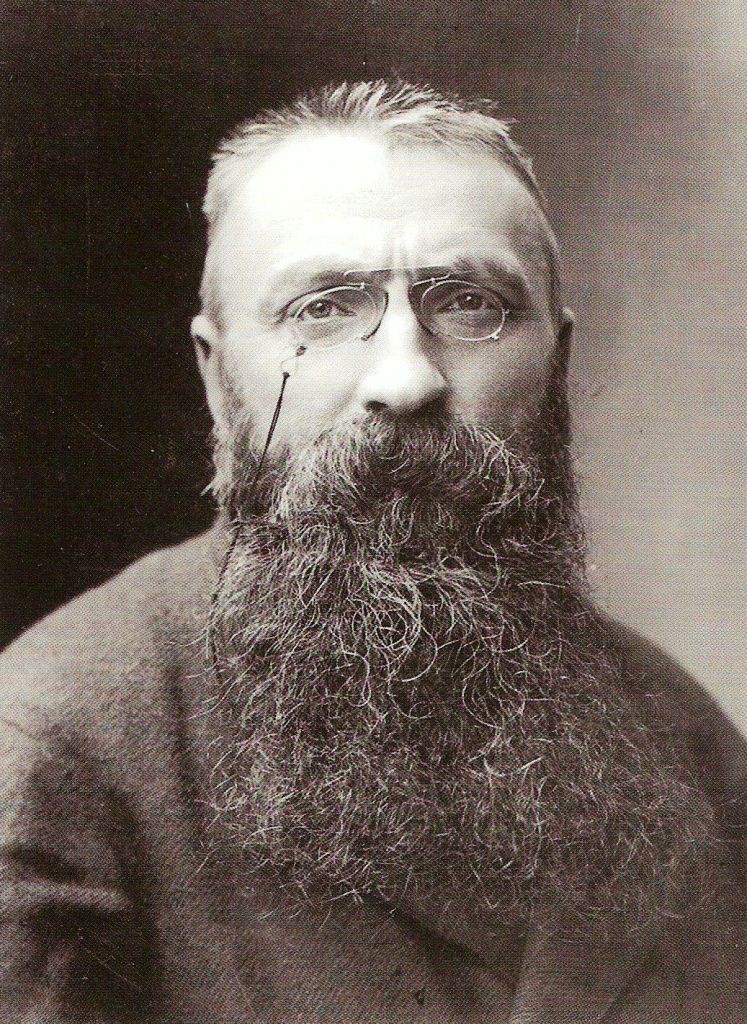Jean D'Aire
Dublin Core
Title
Description
Jean d'Aire by Auguste Rodin, 1889

Jean d'Aire is a nude study of the same figure that is part of Burghers of Calais, one of Rodin’s most famous works. The nude studies show Rodin’s working practice in making The Burghers of Calais – before making the final work, Rodin will make many sketches and studies – or called sketch model and maquettes - on the figures. He will start with making nude maquettes to learn the body expression and movements. After the nude maquettes he made more with clothes before he made the final work.
Auguste Rodin

Auguste Rodin (1840-1917) is one of the greatest sculptors since Michelangelo. He brought the world with many masterpieces including The Kiss (1880-1881), The Thinker (1881-1882), and The Burghers of Calais (1884-1895). Rodin grew up in a working-class district in Paris. He started learning traditions of French 18th century art. Instead of completing rigid Neoclassical training that was popular during the time, Rodin built up his skills through a long and difficult apprenticeship with Albert-Ernest Carrier-Belleuse (1824–1887).
Rodin moved to Belgium during the Franco- Prussian War (1870-1871). Five years after, Rodin first got to know Michelangelo, who was a big influence to Rodin later, and contribute in medieval French architecture, which became his lifelong passion.
Rodin returned to France in 1877 and started to build up his reputation among artistic community in Paris. Through his good relationship with the then government minister Edmund Turquet, he got important commissions such as The Thinker and The Kiss. In his later careers, Rodin expanded his career to America and United Kindom.
Rodin died in 1917. he is an innovative sculptor with his high level attention to detail and unprecedented realism. His legacy has continued being studied by modern artists and scholars.
Burghers of Calais

Burghers of Calais is probably the most successful work of Rodin. It depicts a story during the Hundred Years' War between England and France. The English king Edward III (1312–1377), demanded a massacre of the city of Calais unless the six leaders of the city brought themselves to his front. Following the lead of Eustache de Saint Pierre, five leaders walked out of the gate, facing the immanent death fearlessly. 
The statue of Burghers of
Calais was commissioned by the city of Calais to memorize the six brave men. However, Rodin didn’t make the statue the traditional heroic and glory way, as expected by the general public. Instead, the figures are painful and downtrodden. As a result, it raised controversy upon its completion in 1889. The statute was unveiled in 1895 in the Richelieu Garden in Calais and was moved to the front of the Calais town hall in 1924.
Donor: Jeffrey Loria

Jeffrey Loria is an American art dealer and the owner of the Miami Marlins. Jean d’Aire was donated by him while his daughter was studying at Penn. He has donated other artworks such as King Solomon to the university. According to The Daily Pennsylvanian, he donated artworks to UPenn because he wanted keep Philadelphia’s tradition of contributing to the art and to share them instead of hiding them.
Creator
Date
Coverage
References
The Metropolitan Museum of Art. “Auguste Rodin (1840–1917).”
Wikipedia - “Auguste Rodin”
Wikipedia. “The Burghers of Calais”
Khan Academy. “Rodin, The Burghers of Calais”
Standard Art Institute – Hidden Treasures: The Burghers of Calais
Daily Pennsylvanian Digital Archives. “The Daily Pennsylvanian, Volume CI, Number 71, 19 September 1985”
